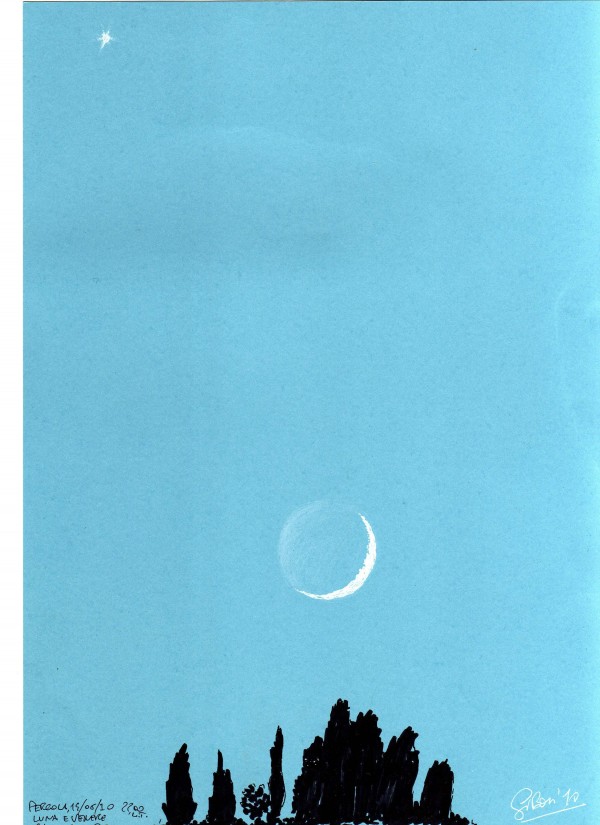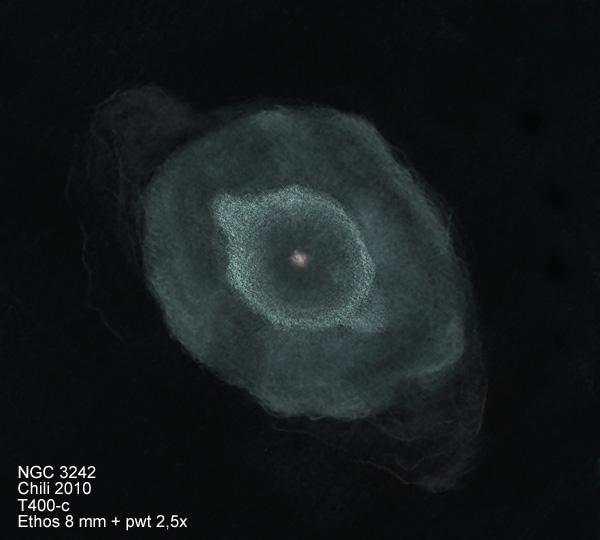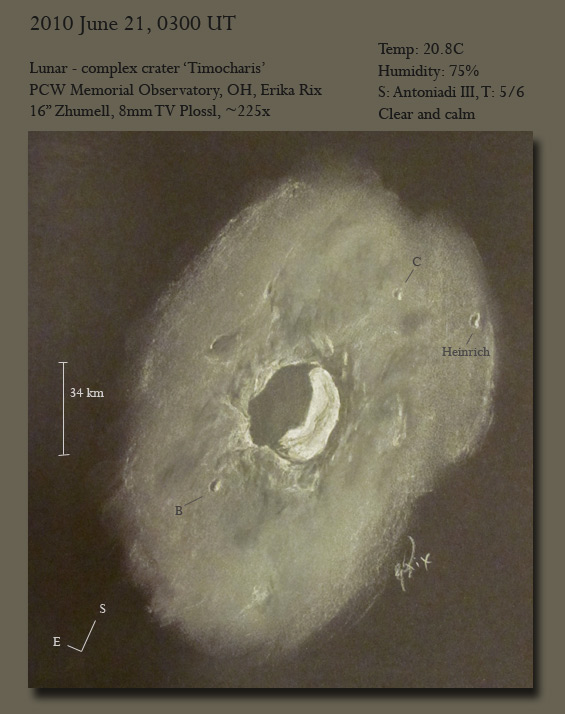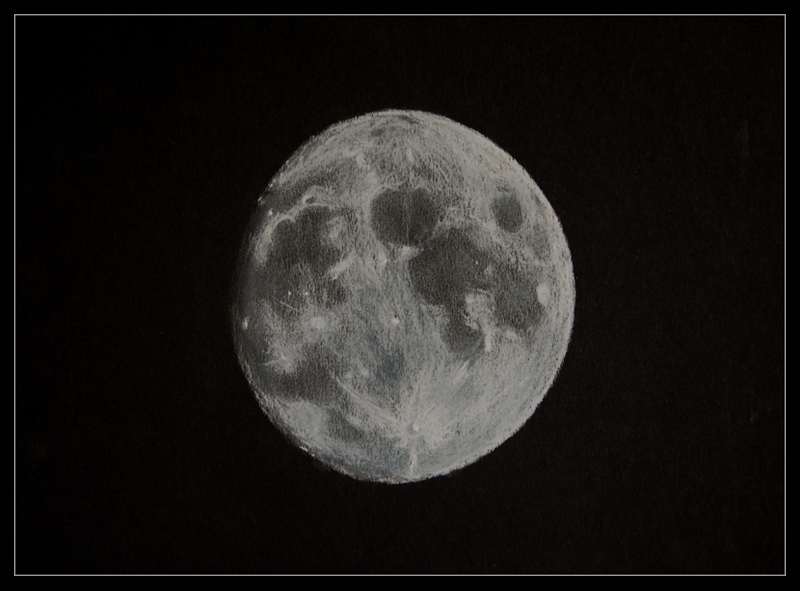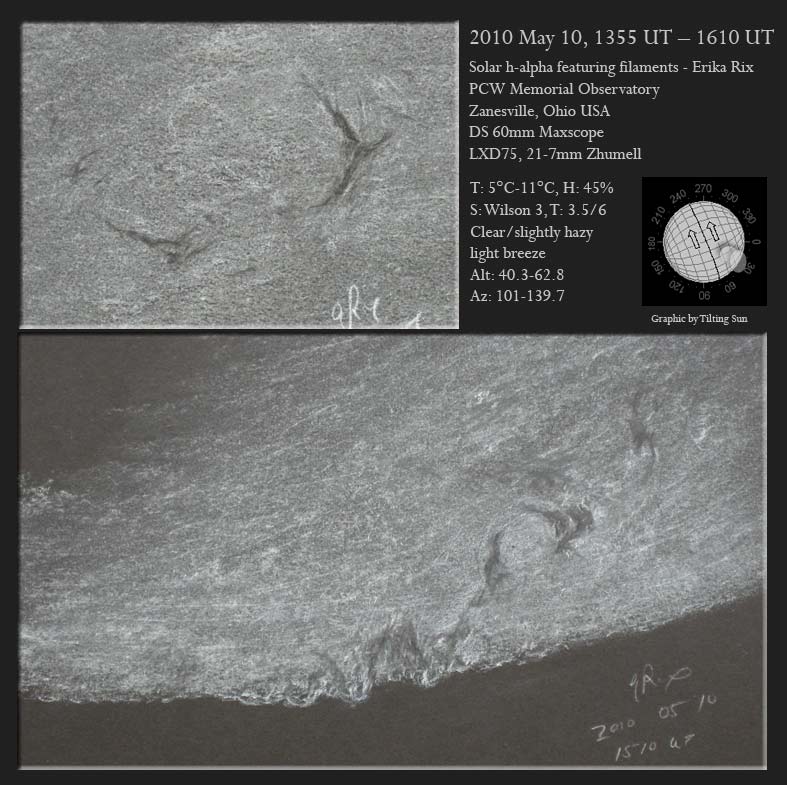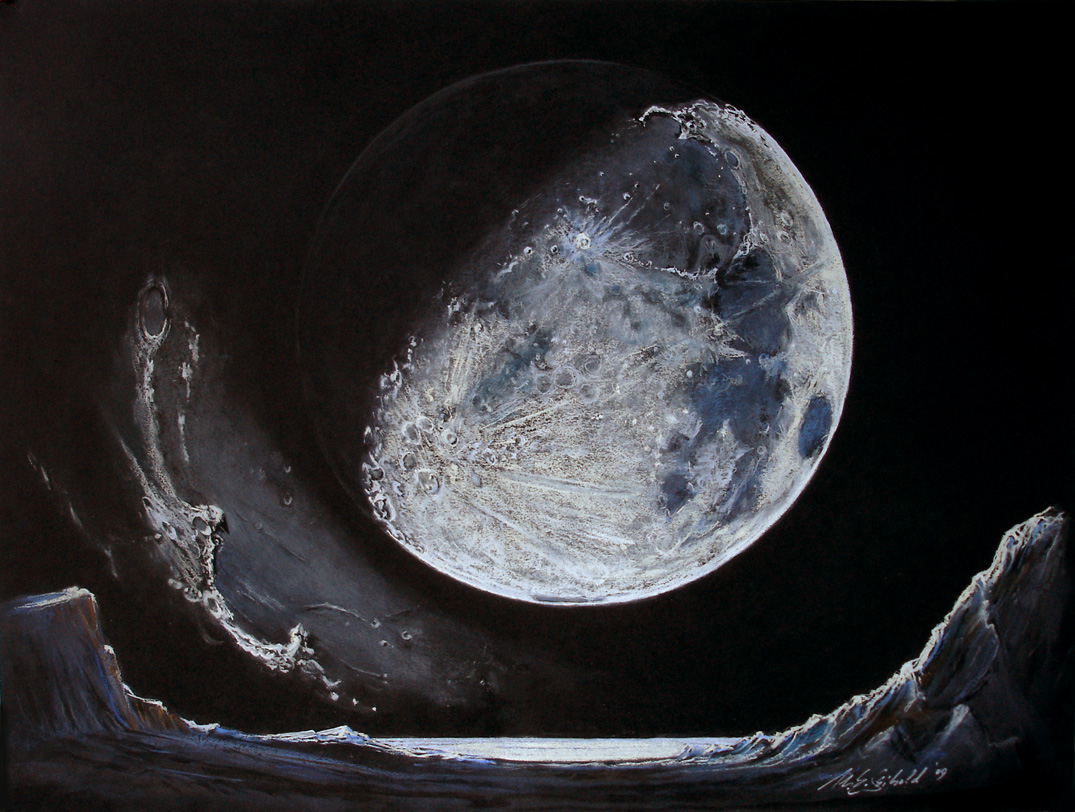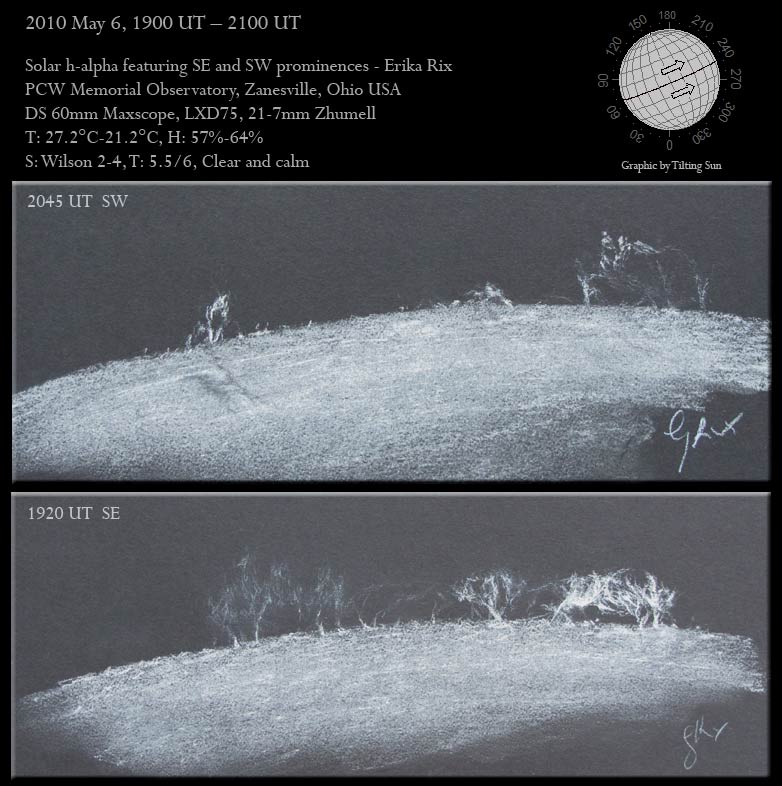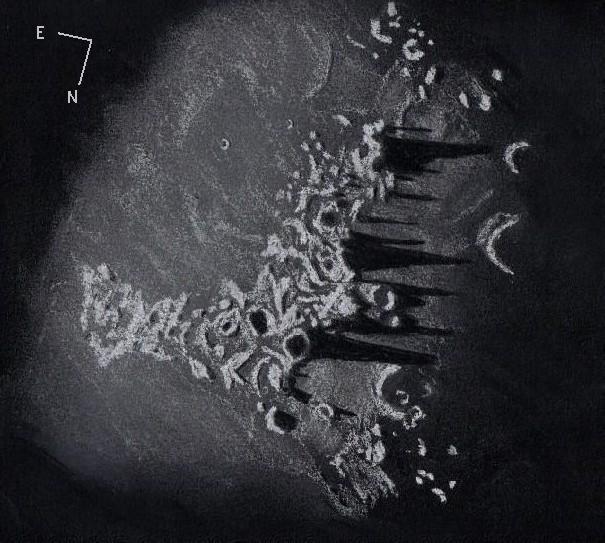Subject: Crescent Moon and Venus in front of my home
Hi Artists,all o.k.?O.k. for me at moment.This spring is very strange,in this moment cold and clouds and rain….i’m without words.
I sent my last sketch of great vision:Crescent Moon and Venus at sunset,made with my little bino 10×50 on trypod.
I am return from work and i see that beautyfull vision on clear blu sky.The seeing was perfect,very clear and on terrace of my room i mounted my trypod and my bino.
i made very quyckly this sketch and i stay ubeliever about the shadow of Moon,i don’t see one like that! Very clear,i can see the clear and the dark zones….incredible!
Under the Moon you can see the top of cypress of the hill folded by the wind.
At next and clear sky….i hope!
Ciao,Giorgio.
Site:Pergola,Marche Region,Center Italy.
Date:14 June 2010 10 p.m. Local time.
Instrument:Bino 10×50 on trypod
Seeing:Excelent
Technics:White pastel and pen on azure paper.
